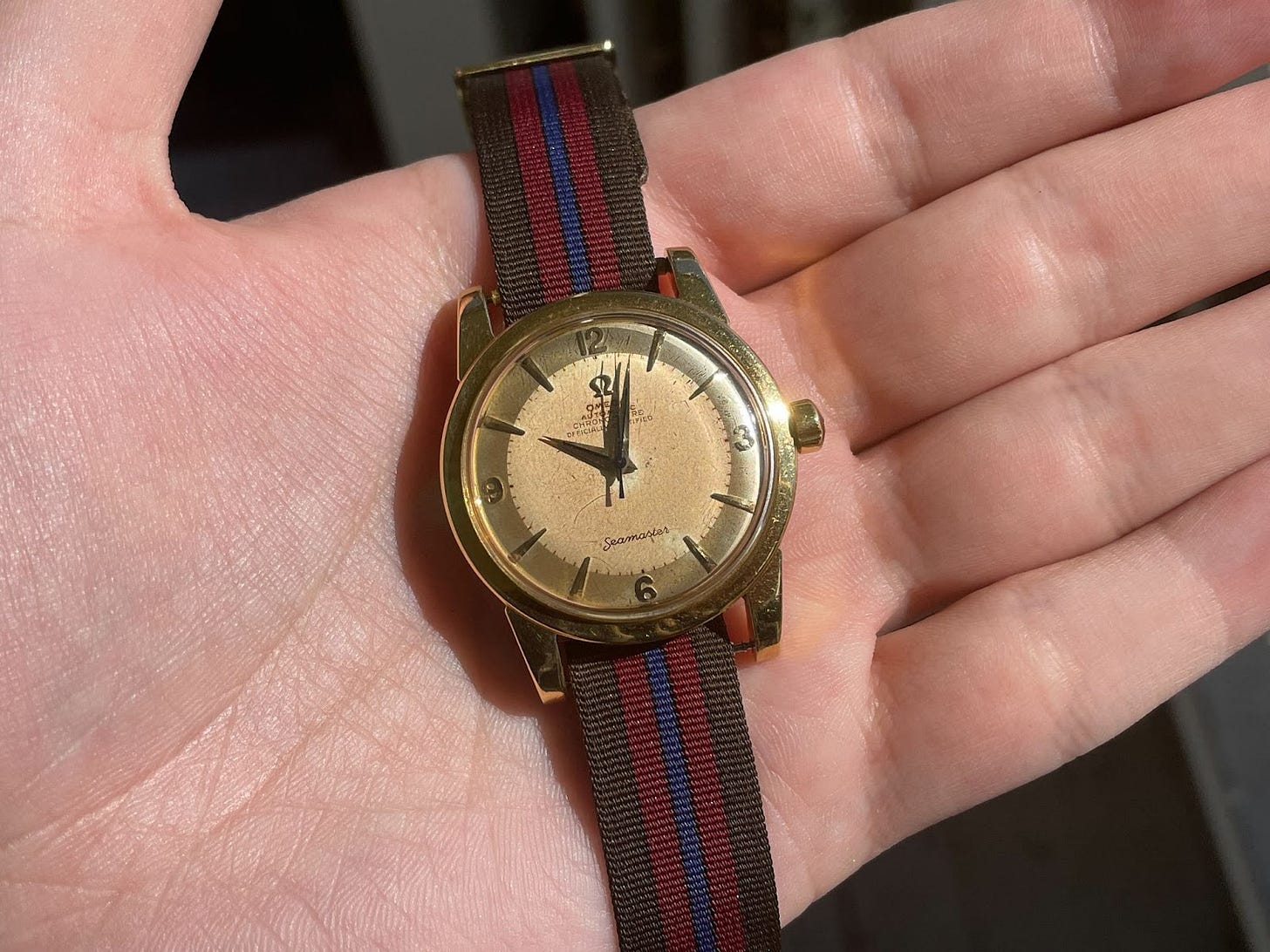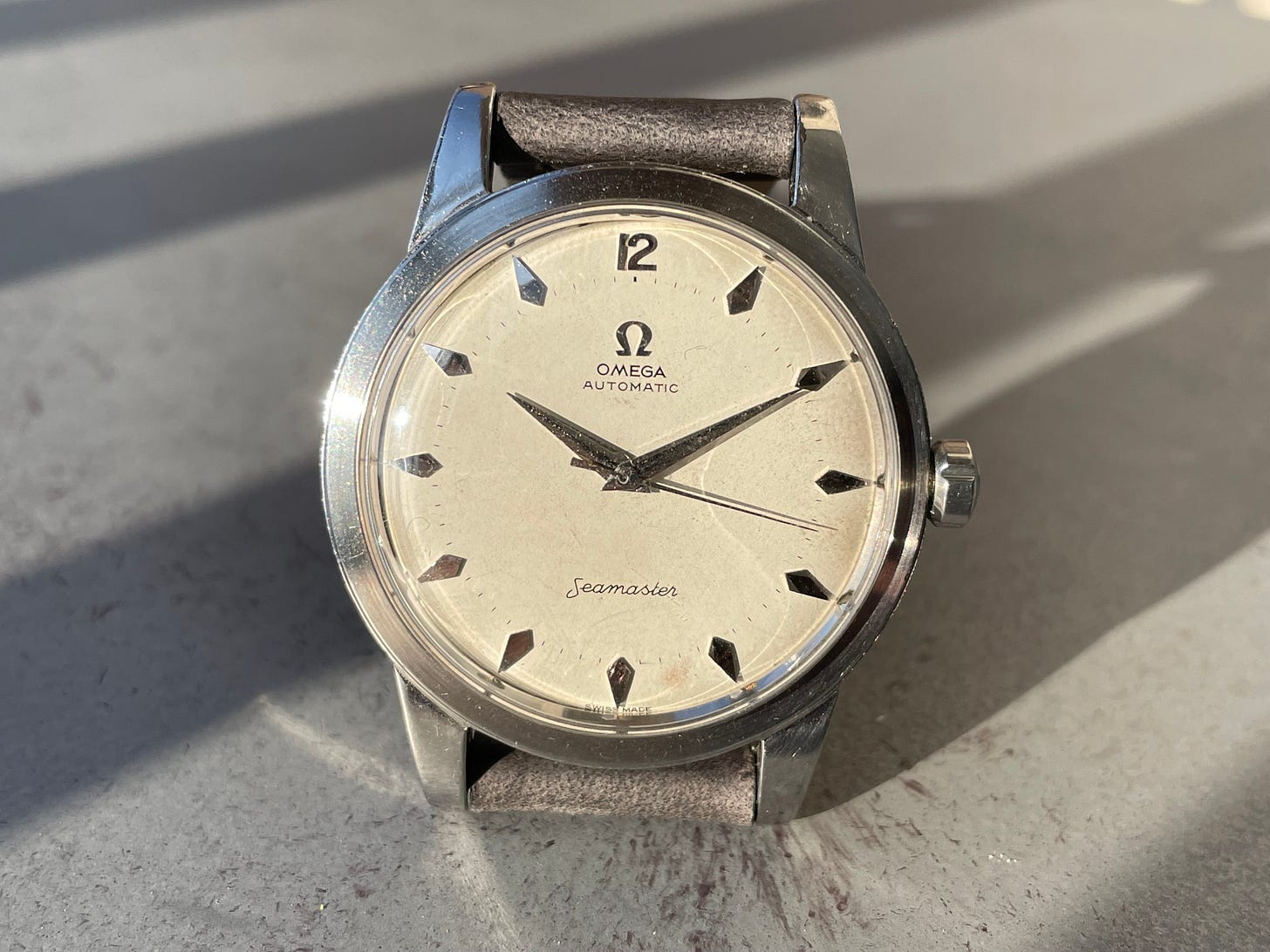The years I’ve spent collecting watches has taken a toll on my wallet. Yes, we all know the struggles of this hobby (addiction), but somehow we all know the feeling constantly wanting just one more piece.
That being said, am I the only one who seems to lust after increasingly more expensive pieces the longer I spend with this hobby? There was a time when the SKX was considered a grail purchase for me, and now my weekend watch is 10x the cost of that original Seiko.
There is a paradoxical nature to this observation, though, and it lies within vintage Omega. The truth is, while the OP is no longer enough to satisfy my presidential appetite, any unassuming example of a vintage Omega provides a reassuring completeness to my revolving door of a watch box. I guess you could say that the more I go down the watch collecting rabbit hole, my level of appreciation towards Omega grows exponentially.
Now I know exactly why this is - quality, and price. Few brands achieve such a sweet ratio of these two factors. As the masses continue to flock to the watch market, vintage Omegas seem to stand their ground.
Through today’s discussion, we examine the beauty in vintage Omegas and the market in which they’re found. Although they are watches I consistently recommend, I take an objective outlook on the subject, and invite the reader to form their own appreciation towards this niche.
Town, Sea, Country…
…the marketing catchphrase made famous during the inception of the original Seamaster. Omega was in the pursuit of creating the perfect everyday piece. A true one watch collection had to be built for the beach, but classy enough for a night on the town.
Do you think this beaut fits the catch phrase?
This phrase was used specifically to describe the Seamaster, today’s discussion also includes other common vintage Omega models from the Constellation to the Geneve and De Ville lines.
While we often dramatize our requirements towards a watch’s capabilities, these Seamasters were neither overbuilt nor underbuilt. Sure, they aren’t capable divers, but are any of us?
Not only have these pieces proved the test of time, but they represent an important era in the history of both Omega and horology. The Omega brand became famous through the popularity of these seemingly affordable Seamasters/Constellations/Geneves.
Knowing this history, a vintage Omega is but anything to scoff at. They’re powerhouses in the heritage department, yet also capable pieces with daring designs. From matte blue to gilt honeycomb dials, they seem to come in endless variety. Almost everyday I discover a new configuration of these gems spanning between the 1940s and 1970s.
A two tone patinated dial, rarely do examples like this come up for collecting without insane premiums
This blend of beautiful design, rooted heritage, and capable construction are just a few of the factors behind these vintage Omegas. The case for these gems becomes even stronger when you begin to compare vintage Omegas to their competitors from the same era.
Current Market and Competitors
It took me about a year into my watch collecting journey to discover the world of vintage Omega.
At the time, I had both a vintage Rolex and Tudor to my collection. I had merely $600 left to buy a third piece, and I took the chance on an old patinated Seamaster.
Even with this three piece collection, there was quite a delta between my most expensive piece, and my common Seamaster. This being said, however, the Seamaster was the piece I wore the most. Now, years later, my favorite watch in my collection is a patinated Seamaster. It isn’t the most flashy or impressive piece, but the one I wear the most. Why is this?
Many of you already know the piece in question (;
For me, it comes down to design and competition. While there are a multitude of vintage Omega designs out there, many of them create this satisfying perception of perfection on wrist. The proportions and fit/finish of these vintage pieces are unmatched leaving the wearer with a deeper understanding of Omega’s rise within the watch community. Not every watch accomplishes this feat, let alone with their vintage pieces.
Breaking down these watches a step further is yet another indicator to their niche popularity.
Many of these Omegas are true “IYKYK” pieces. Stacked up against their main competitors from the era (namely Rolex OP and Datejust references), the movement, finishing, and construction between these pieces are comparable. That being said, there is one drastic difference - their prices.
The star of an article from a few months back comparing this vintage Omega to a Rolex 1018 jumbo
I’ve found the vintage Omega market to be more fun and collectable. With Rolex pieces, they are hefty, infrequent purchases. For the same amount of money, you’re able to dabble in a couple different Omega designs without having to tie too much money into one piece. Because of this ease of collectability, I feel my time with learning and buying vintage Omega is not only more exciting, but rewarding too.
Therein lies one of my strongest points - the generalization of Omega’s brand. With these vintage pieces, serious collectors and novice newbies are able to find common ground. While some vintage Omegas fetch thousands, and others less than 1k, the same basic construction and heritage is prevalent throughout this multifarious market.







Wow some stunning examples here. Great pics (and article)!